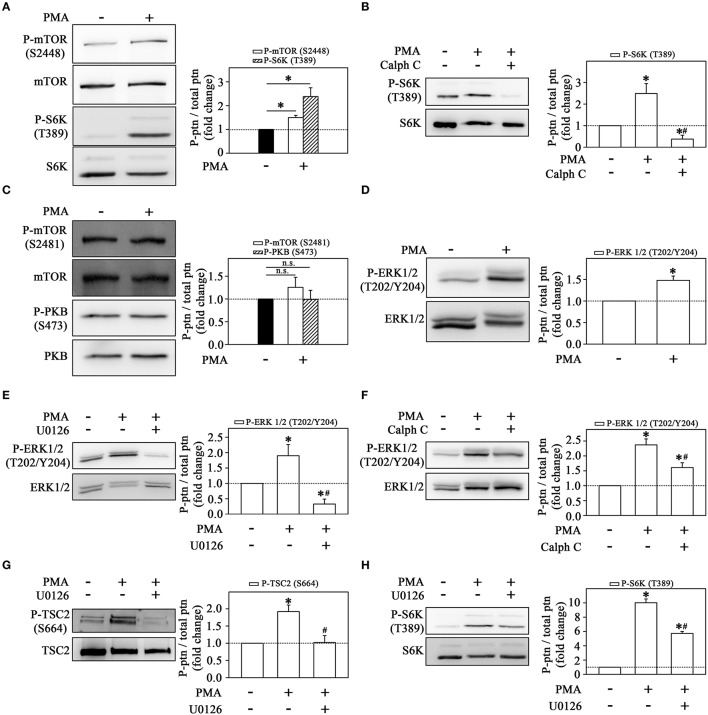Figure 8.
Signaling cascades triggered by the direct activation of PKC on THP-1 monocytes (A) PMA induces mTOR and S6K phosphorylation at residues S2448 and T389, respectively (n = 3). (B) The effect of 10−6 M calphostin C on S6K phosphorylation. (C) PMA did not change the phosphorylation levels of mTOR on S2481 residue and consequently of Akt/PKB on S473 residue. (D) The effect of PMA on ERK phosphorylation. U0126 (E) or calphostin C (F) prevented the stimulatory effect of PMA on ERK phosphorylation. PMA-induced TSC2 (G) and S6K phosphorylation (H) is prevented by U0126. The levels of phosphorylation were determined by the relationship between the optical density of specific phosphorylated residues and total fractions. The result is expressed in fold change in relation to an untreated control (bar graph). ERK, extracellular signal-regulated protein kinase; TSC2, tuberous sclerosis complex 2; S6K, S6 protein kinase; Calph C, calphostin C. Images are representative of three independent experiments (left panels). The results are presented as means ± SE. *p < 0.05 vs. unstimulated non-adhered cells (control). #p < 0.05 vs. PMA.

